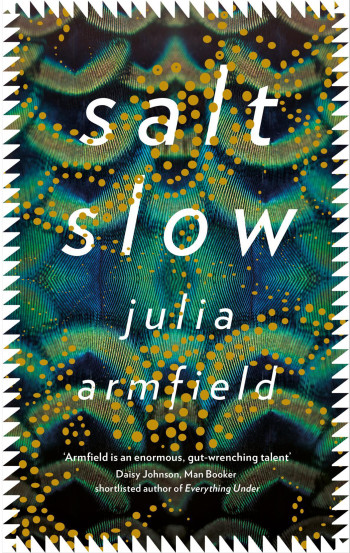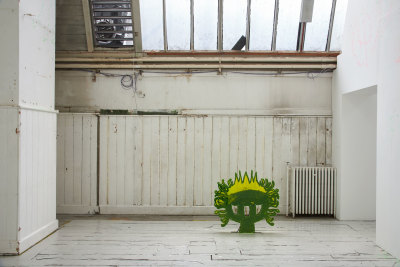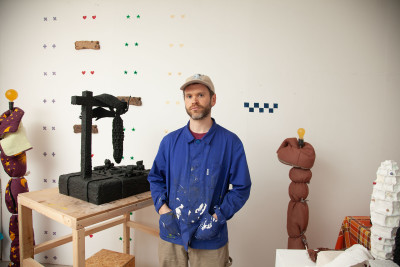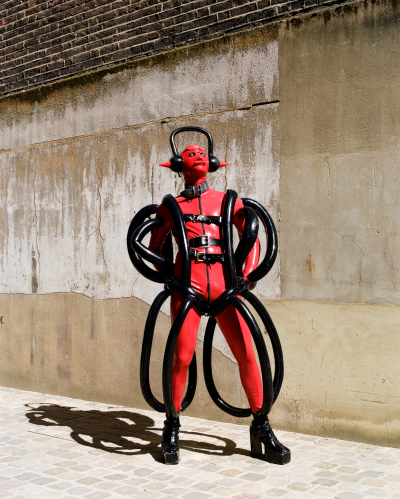12 books to influence creativity, picked by RA Schools students
12 books to influence creativity, picked by RA Schools students
Published 5 February 2020
Ahead of their mid-course show, ‘Premiums’, the Academy’s second-year post-graduate students reflect on the writing that has informed their practice.
-
From the Winter 2019 issue of RA Magazine, issued quarterly to Friends of the RA.
-
-

The Sellout (2015) by Paul Beatty
“I am not sure what initially drew me to read this novel, but I was aware that Beatty had won the Man Booker Prize and the cover looked good enough. By the sixth page I was laughing out loud and desperately wanted to decode the magical symbolism of the setting, Los Angeles, and the characters’ personalities. The novel is a satire about a young man’s isolated upbringing and the race trial that sends him to the Supreme Court. It was fascinating to understand the mind and motivations of the unnamed protagonist. Currently, I am eager to inject humour in my own artworks.”
Ayo Akingbade -

The Origin of Others (2017) by Toni Morrison
“The late Toni Morrison explores in this book how societies and individuals develop the notion of “the other”, and as a result hinder the possibility of knowing others and stifle the chance to gain knowledge of themselves. It is a book for those who want to understand better the process of how we invent our ideas about others and, in Morrison’s words, humans’ “tendency to separate and judge those not in our clan as enemy, as the vulnerable and deficient needing control.” I’m moved by the words she offers to seek and venture out into the unknown; there lies a greater possibility for change.”
Emmanuel Awuni -

The Woman in the Dunes (1962) by Kobo Abe
“The protagonist in Kobo Abe’s novel is an entomologist who, on a visit to a remote area of sand dunes, becomes trapped in a pit by villagers, and is forced to shovel the advancing sand. He looks for his own kind of roadmap through the moments that occur, developing a new kind of logic, a new form of adaptivity. The sense of imprisonment within vanishing frontiers reminds me of the feeling of our time. Can we personally accept our roles as castaways from a culture that is collapsing? If we went into tunnels like foxes do, would we be able to sense differently, find new paths, new connections?”Lene Vollhardt
-
-
-

Performance in Contemporary Art (2019) by Catherine Wood
“The individual, the social and the material object frame any understanding of performance art in the visual arts. These elements form the three-part structure of Catherine Wood’s commentary, as the Tate curator works out an evolution of the form from social critique in Adrian Piper’s The Mythic Being series (1973-75) to fractured relations in Dan Graham’s video Performer/Audience/Mirror (1975). The book’s three sections – “I”, “We” and “It” – reflect on a sophisticated performance repertoire that has had great influence internationally, reminding us that performance art emerges from the dynamic between the artist, the audience and the artwork.”
Catinca Malaimare -

The Craftsman (2008) by Richard Sennett
“The Craftsman was a suggested read by a visiting tutor in my final months at The Ruskin School of Art, before I graduated in 2013. Richard Sennett, Emeritus Professor of Sociology at the London School of Economics, argues that the role of the craftsman is far greater than skilled manual labour, emblematic of the ideas of making and doing things well. Six years and three studios later, the now dirty and dilapidated book remains on my shelf and continues to be regularly revisited as I make work, experimenting with materials, processes and the way in which they reflect thought, feeling and opinion.“
James Lomax -

Let Us Now Praise Famous Men (1941) by James Agee
“This book journals the writer James Agee’s time spent with families of sharecroppers during the “Dust Bowl” era in the American South of the 1930s. It catalogues Agee’s internal conflict as he grapples with the justification of documenting the lives of the impoverished families; Agee’s presence weighs heavier and heavier on the text as he struggles with the potentially exploitative role of the journalist. He touches upon ideas of representation and translation, which are things that I frequently return to with my work. I’m currently making a series of image-based figurative paintings.”
Luke Samuel
-
-
-

Salt Slow (2019) by Julia Armfield
“Salt Slow is Julia Armfield’s award-winning debut collection of wicked short stories. This collection is disorientating in its blurring of monstrosity and normality, and often descends into disorderly confusion. As a city becomes insomniac overnight, lovers are turned to stone, and a girl band and their all-female following leave a trail of massacres behind them on tour. Armfield’s stories have influenced the landscapes that I build up with my collections of sculptures. They have also challenged me to embed quiet cues of reality within the dystopias of creatures in my head before their translation to sculptural form, and they have shown how allowing humour within a disorientating environment can create the perfect slippage of reality.”
Millie Layton -

A Field Guide to Getting Lost (2005) by Rebecca Solnit
“Writer and historian Rebecca Solnit’s essay collection connects disparate ideas with the thread of physical and internal journeys, loss and transformation. Meandering through geographies and histories, her personal recollections merge with the political and cultural world. What resonates most are the four essays titled “The Blue of Distance”, which share my interests in landscape, body and desire. Solnit explains how painters first started to paint depth by colouring distant landscapes blue. It becomes the colour that we can never arrive in, the colour of distance and longing, and through this, desire becomes written into the landscape. The way Solnit layers emotion and stories, transforming inarticulate feelings into a tangible sight, is an aspiration for my own work.”
Rebecca Kay -

Of Walking on Ice (2014) by Werner Herzog
“Werner Herzog once declared, “Tourism is sin, and travel on foot virtue.” The filmmaker’s book Of Walking in Ice, originally published in 1978, is a highly poetic account of a journey taken on foot from Munich to Paris, during the winter months of 1974. Herzog had recently heard his long-time friend and mentor Lotte Eisner was ill and dying; he sets off “believing that she would stay alive if I came on foot.” What follows is a candid, comic, absurdist and at times deeply existential series of diary accounts. The book creates a place of poetic excess, in a sensual attempt at finding the “real.” Although it doesn’t have a direct, literal influence in my work, there is a sense of ‘attitude’/atmosphere in Herzog’s writing to which I can very much relate. I am currently working on a group of ceramic works and a series of high-relief sculptures.“
Matthew Peers
-
-
-

The Fashion System (1967) by Roland Barthes
“Over the summer I read the 1990 edition of this book, first published in 1967, by the theorist Roland Barthes. The book concentrates on analysing the descriptions of women’s clothing that appear in fashion magazines. Barthes has used this content to decipher fashion into a system. Through it, the reader begins to better understand the relationship that fashion has with the world and the ideology of fashion in itself.
“The Fashion System has been useful to the development of my paintings as I have begun to find new ways to expand the outcomes of my canvases through a deliberate system of text, image, material and colour.”
Nicola Gunnarsson -

Art & Fear: Observations on the Perils (and Rewards) of Artmaking (1994) by David Bayles & Ted Orland
“This book explains some of the fears about artmaking that an artist usually faces: fears about oneself, about one’s own work, other people, or the outside world. One of the biggest challenges is knowing how to deal with your own thoughts – and this book helps to deconstruct and reflect back to us those self-criticisms that we all go through in our studios.
“This is a book that has helped me to engage with and challenge difficulties, to focus on understanding my specific processes and idiosyncrasies, and to keep learning about my own work.”
Sofía Clausse -

Figures of Speech or Figures of Thought? (1996) by Ananda K. Coomaraswamy
“In this collection of essays, Coomaraswamy reflects upon folklore, religion, the medieval mind and metaphysics in relation to art. Throughout, we glimpse the author’s vast knowledge and his determination to “understand what has been said”, as opposed to claiming new schools of thought. This humility has inspired my work with analogue photography, encouraging me to develop a deeper understanding and appreciation of its craft and tradition.”
Hannah Farrell
-
-
-

Premiums
Interim Exhibition
Premiums: Interim Projects 2020 is on in the Weston Studio and the McAulay Gallery from 13 February — 11 March. It offers visitors a chance to see new work developed in the studios of the RA Schools at Burlington House.
-
-
-
Enjoyed this article?
Become a Friend to receive RA Magazine
As well as free entry to all of our exhibitions, Friends of the RA enjoy one of Britain’s most respected art magazines, delivered directly to your door. Why not join the club?

-

















